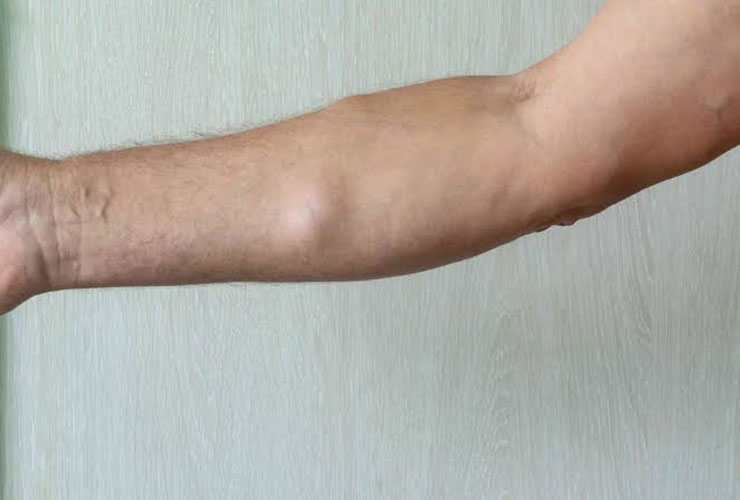A lipoma is a benign (non-cancerous) growth of fatty tissue that typically forms just beneath the skin. These growths are usually soft, smooth, and painless. Lipomas can develop anywhere on the body but are most commonly found on the neck, shoulders, back, abdomen, arms, or thighs. While lipomas are generally harmless, they can be bothersome or cosmetically undesirable for some people, leading them to seek treatment options.
Here are some key points about lipomas and their treatment procedures:
- Observation: In many cases, no treatment is necessary if the lipoma is small, painless, and not causing any discomfort. Some people choose to simply monitor the growth and seek treatment only if it becomes problematic.
- Surgical Removal: The most common method of treating a lipoma is surgical removal. This procedure is known as excision. It is typically performed by a dermatologist or a surgeon under local anesthesia. The lipoma is cut out through a small incision in the skin. After removal, stitches are used to close the incision. This procedure is usually effective, and recurrence is rare.
- Liposuction: In some cases, liposuction can be used to remove lipomas. A small incision is made, and a thin tube (cannula) is inserted to suction out the fatty tissue. This technique is often preferred for larger lipomas.
- Steroid Injections: In some instances, especially if a lipoma is in a delicate area where surgical removal is not ideal, steroid injections may be administered. These injections can help shrink the lipoma over time, but the results may not be as predictable as with surgical removal.
- Lipoma Enucleation: This is a specialized surgical technique used for certain lipomas. It involves making a small incision, dissecting the lipoma from the surrounding tissue, and carefully removing it intact. This method can be preferred when the goal is to preserve the lipoma for biopsy or research purposes.
- Natural Remedies: There is no scientific evidence to support the effectiveness of natural remedies, such as herbal supplements or topical applications, for treating lipomas. It’s generally best to consult with a healthcare professional for appropriate treatment options.
- Recurrence: While surgical removal is effective in most cases, there is a small chance that lipomas can recur. If a new lump appears at the same site, it’s important to have it evaluated by a healthcare provider.
- Consult a Healthcare Provider: If you notice a new growth or are concerned about an existing one, it’s important to consult a healthcare provider. They can diagnose the condition and recommend the most suitable treatment option based on the size, location, and characteristics of the lipoma.
Remember that lipomas are typically benign and not a cause for immediate concern. However, it’s essential to seek professional medical advice for proper evaluation and guidance on treatment options if you have any doubts or concerns about a lipoma.

